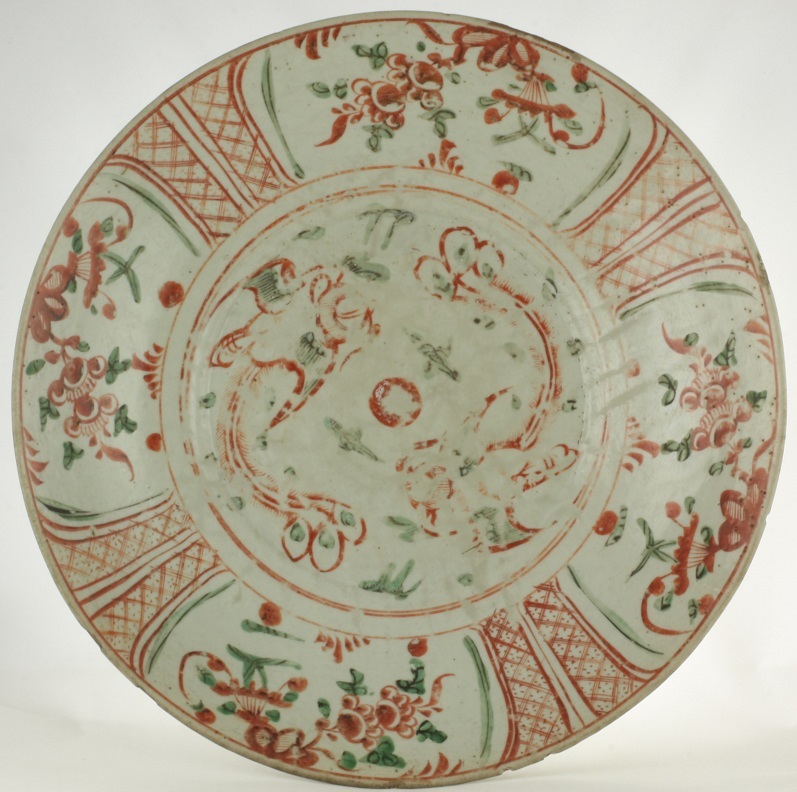
Sold Ceramics - Sold Zhangzhou (Swatow) wares 1570-1650 - Dishes - Polychrome - Page 1
Object 2011129
Dish
(Southeast) China, Zhangzhou (Swatow)
1580-1640
Height 75 mm (2.95 inch), diameter of rim 380 mm (14.96 inch), diameter of footring 182 mm (7.17 inch), weight 2.106 grams (74.29 ounce (oz.))
Large dish on footring with flaring sides, ridged and out-turned at the edge, the base is unglazed. Polychrome decorated with overglaze iron-red and green, black and turquoise overglaze enamels with two phoenix encircling a pearl amidst clouds. On the sides and rim four large panels filled with flowering plants separated by four narrow panels filled with a lozenge diaper pattern. The reverse is undecorated.
Swatow ware was mainly exported to Japan and Southeast Asian countries such as Indonesia, the Philippines, Malaysia, and Brunei. It was the main Chinese export ware to Indonesia in the sixteenth to seventeenth centuries. Examples are found as treasured heirlooms and excavated in ancient historical sites and shipwrecks. In the past they were used extensively by the nobility and the elite in communal feasts heaped with food, as wedding gifts and as status symbols. Not many were used as funerary gifts as the Muslim religion forbade such practices. Fragments of polychrome and blue and white ware have been found in the Zhangzhou kilns in Fujian. This is evidence that polychrome wares were made in the same kilns and at the same time as blue and white wares. Polychrome ware is very popular in Indonesia and Japan. In Indonesia it is called 'Ming merah', or red Ming; in Japan it is named 'gosu akae', or red ware, and also Nanking enamelled ware. The polychrome ware has four colours. Red tends to be dominant and is used for the principal motifs and diapers. Black is used for outlines and green is the colour of leaves. Turquoise covers black outlines of animals, mythical beasts and humans or it is used on its own. The use of the turquoise colour could have been influenced by Muslin patronage. For the Middle East and Southeast Asian countries with a predominantly Islamic population, the turquoise is an auspicious stone. (Adhyatman 1999, pp.32-34)
For an identically decorated dish, please see:
Condition: Three glaze rough spots and six chips to the rim. Wear to the decoration due to extensive use.
References:
Price: Sold.


 create websites
create websites